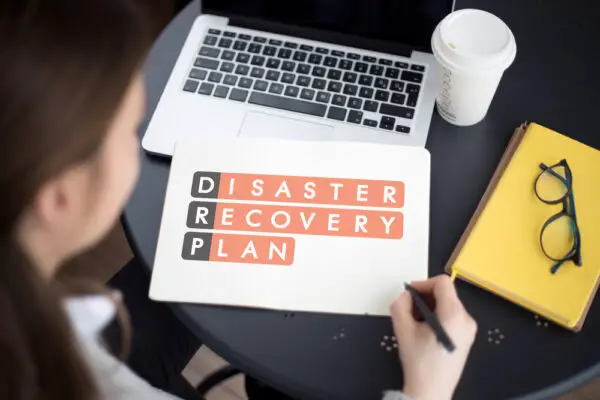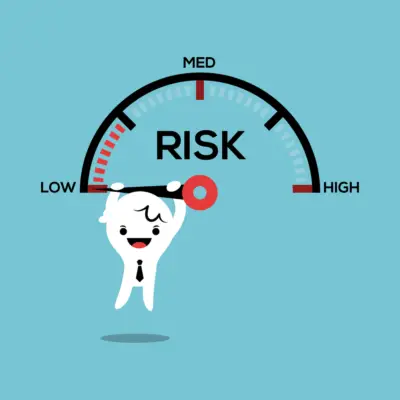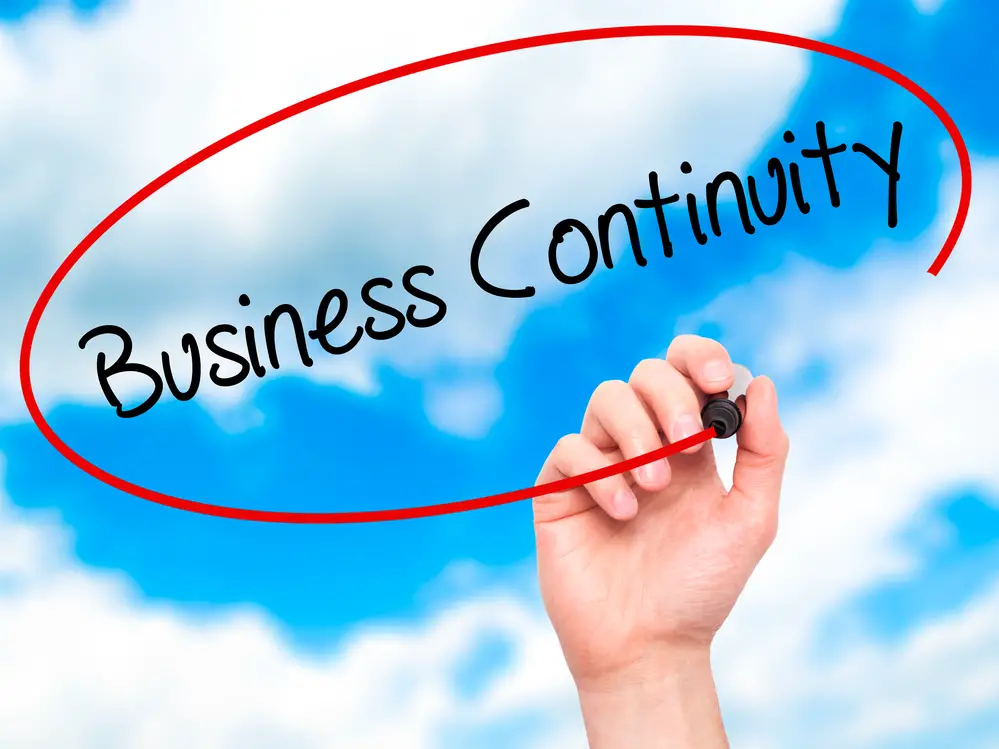Explore the critical distinctions between Disaster Recovery (DR) and Business Continuity (BC) plans in this informative guide. While both concepts aim to protect your organization from potential disruptions, they serve different purposes and require unique strategies.
Understanding these differences is essential to ensure your organization is adequately prepared for unforeseen challenges. Dive into the key elements of DR and BC plans, their respective roles in safeguarding your business operations, and how to effectively implement both strategies to maintain resilience in the face of adversity.
Disaster recovery is about getting your business up and running after a disaster. This could be anything from a power outage to a fire or flood. The goal of disaster recovery is to minimize the downtime your business experiences so that you can restore normal business operations and mission critical systems. Depending on the disaster recovery strategy, the outcome of disaster recovery is a disaster recovery plan.
On the other hand, business continuity planning is about preventing disasters from happening in the first place. BC plans focus on keeping your business operations running even during a crisis. Business continuity planning and disaster recovery(business continuity vs disaster recovery plan) could involve anything from having backup power generators to having remote working capabilities so that your employees can work from home if they can’t come into the office.
A disaster recovery plan (DRP) focuses on how a business can recover after a major disruption, such as a natural disaster or cyberattack. On the other hand, a business continuity plan (BCP) focuses on how a business can keep operating during and after a major disruption.
In other words, a DRP is focused on getting your business up and running again after an interruption. In contrast, a BCP is focused on keeping your business running even when disruptions occur according to a business continuity strategy. Business continuity vs disaster recovery definition is majorly on restoring critical process of the organization.
Ideally, your business should have both a DRP and a BCP. After all, disruptions can happen at any time—and you need to be prepared for them. Both of them are important to safeguard critical business functions. The enterprise risk management framework includes business continuity management of the company.
A DRP will help you quickly get your systems and data back online after an interruption. A BCP will help you keep your systems and data accessible even when interruptions occur. Together, these two plans will ensure that your business can weather any storm.
Creating a DRP requires careful planning and coordination. First, you’ll need to assess the risks that could disrupt your business. Then, you’ll need to develop strategies for mitigating those risks. Finally, you’ll need to create detailed procedures for restoring your systems and data during an interruption.
Developing a BCP requires careful planning and coordination. However, there are some key differences between DRPs and BCPs. For one thing, BCPs are usually more comprehensive than DRPs because they must account for potential disruptions of all kinds—not just disasters.
Additionally, BCPs generally require more buy-in from employees than DRPs since they may be called upon to help maintain operations during an interruption. Finally, BCPs must be regularly tested and updated to ensure that they remain relevant and effective. Like DRPs, developing a BCP can seem like a daunting task—but there are many resources available to help you get started, including templates, checklists, and best practices from industry experts.

Much discussion around business continuity and disaster recovery (BC/DR) centres on implementing technology. While this is an important piece of the puzzle, it’s not the only one. BC/DR planning must consider all aspects of your organization, from people and processes to facilities and technology.
An effective business continuity and disaster recovery (BCDR) is gaining more visibility today and more widely than ever. Every organisation has an increasing dependency on digital technologies to generate revenue, provide customer support and deliver solutions which are expected to provide applications and data.
Disaster recovery is closely related. In the late 70s, organisations started planning for disaster recovery and primarily aimed at natural disaster situations. During the 80s, the emphasis shifted towards embracing a more holistic approach titled “Battle Continuity”. Business continuity aims to develop an effective process to keep companies alive even when the situation has become catastrophic.
This comprehensive approach can help ensure your organization survives any type of disruption. What’s the difference between BC/DR and a business continuity plan (BCP)? Let’s find out.
What is a Disaster Recovery Plan?
A disaster recovery (DR) plan is a document that outlines how a business will recover from a catastrophic event. A DR plan covers data backup and restoration, hardware and software replacement, and employee training. The goal of a DR plan is to get the business up and running as quickly as possible after a disaster.
What is a Business Continuity Plan?
A business continuity (BC) plan is a document that outlines how a business will continue to function in the event of a disaster. A BC plan covers alternate workspaces, communication plans, and employee productivity. The goal of a BC plan is to keep the business running as smoothly as possible during and after a disaster.
Differences Between Disaster Recovery and Business Continuity Plans
Now that you know what each type of plan entails, it’s time to take a closer look at the key differences between disaster recovery and business continuity plans(bcp vs drp):
-Disaster recovery plans focus on restoring data and infrastructure after a disaster, while business continuity plans focus on keeping the business running during and after a disaster.
-Disaster recovery plans are reactive, while business continuity plans are proactive.
-Disaster recovery plans are typically developed by IT staff, while business continuity plans are typically developed by senior management with help from business continuity managers or risk managers.
-Disaster recovery plans are typically shorter and less detailed than business continuity plans.
-Disaster recovery plans focus on immediate needs, while business continuity plans focus on long-term needs.
-Disaster recovery plans are usually limited to recovering from IT-related disasters, while business continuity plans can cover any type of disaster (e.g., natural disasters, pandemics, terrorist attacks).
This disaster recovery focuses on helping communities rebuild and return to normal functioning as quickly as possible. However, it’s important to note that disaster recovery goes beyond just repairing physical structures.
It also encompasses emotional and mental healing for those affected by the disaster, restoring economic stability and ensuring long-term resilience against future events. These components come together to create a comprehensive approach to rebuilding after a disaster.

Similarities of Disaster recovery and Business continuity plan
How companies respond to emergencies can greatly affect how quickly they resume their work and their chances of succeeding. Planning and putting together systems can be just as critical(disaster recovery vs business continuity)if the event does not occur. To prepare for disaster recovery, organizations must also implement disaster recovery plans.
The business continuity or disaster recovery plan is independent, disaster recovery vs business continuity plan but it needs to be combined since it combines many of the same concerns.
This is a common misconception when talking of business continuity over disaster restoration. Business continuity (BCP) and Disaster Recovery (DR) have overlapped. Still, these terms can often be interchanged, creating even greater confusion. Business continuity means ensuring critical businesses function continues to run without interruptions in a business interruption.
Generally speaking, professional work environments should not change from the time of employment and should have satisfied rhythms and routines. However, certain events may disturb the normal flow. A vital part of managing is to prepare for interruptions and plan for them to keep business functions functioning despite the pressure.
This discipline minimizes the impact of an unexpected incident on business performance to deliver products or services. Disaster recovery process can be tailored to the specific needs of each business and should include both preventative and restorative measures.
The most successful recovery plans assess risk, create an actionable response, develop counter-measures for potential threats, establish communication protocols between staff and stakeholders, and document all changes made throughout the process.
Business continuity or disaster recovery is a close-lipped approach that assists organizations in maintaining operational effectiveness when a catastrophe occurs. Business resilience is becoming the mantra for organizations that face many threats, including natural disasters.
Why do disaster recovery and business continuity matters?
Disasters, whether natural or man-made, can have a devastating impact on businesses. Without proper planning, a disaster can result in major disruption to operations and lead to loss of revenue and customers. That’s why disaster recovery and business continuity(business continuity management vs disaster recovery) are crucial for any organization since they assist critical business operations.
They involve creating plans and strategies for responding to and recovering from potential disasters, minimizing their impact on day-to-day business operations. This not only helps to ensure the company’s survival but also protects employees and customers.
In today’s increasingly interconnected world, it’s important for businesses to have these plans in place to protect against the growing threat of disasters. Investing time and resources in disaster recovery and business continuity planning can ultimately save a company from costly consequences in the long run.
Business continuity explains exactly where the company is going after an accident. The business may also offer contingency plans describing the business’s operation even when moving into a new place.
Business continuity planning also considers small disruptions and minor disasters like extended power interruptions. Disaster recovery refers to businesses’ plans to respond to an emergency like a natural or cyber disaster. Disaster recovery is a measure taken by a firm to respond immediately to events and return to optimum safety and normal operations.
How do they work together – Where Business Continuity and Disaster Recovery overlap?
Business Continuity and Disaster Recovery plans have overlapping elements but distinct focuses. Business Continuity planning typically involves identifying and mitigating potential disruptions to a company’s operations, such as supply chain interruptions or IT system failures.
On the other hand, Disaster Recovery centres around restoring business functions after a disaster occurs. Both plans involve preparing for various scenarios, creating response teams and communicating with stakeholders. However, it is important to distinguish between the two, as they require different approaches and resources.
A continuity plan provides steps to take when you experience an unanticipated problem with your existing business. Business continuity planning outlines a strategy that enables business process control to be carried out as close to business as possible.
Disaster recovery planning is a holistic approach focused on tools needed to restore your lost equipment or data. However, disaster recovery plans can be activated in some situations without requiring an extensive business continuity plan.
Understanding Business Continuity
A business Continuum is used temporarily to fix an interruption until the problem is resolved. During a crisis, it’s important for your company to have a business continuity plan in place if you cannot maintain operations. Enterprise business continuity allows the organization to include aspects of BCM.
Business Continuity Plans (BCP) provide the actions necessary to maintain critical business processes and your vital assets.
The different types of business continuity plan
A business continuity plan helps to ensure that a company can continue operating in the face of unexpected disruptions or disasters. There are several types of plans that can be utilized. A disaster recovery plan
A business impact analysis assesses potential risks and their impact on the business, while a contingency plan outlines how to handle unforeseen events. Another type of plan is a crisis management plan, which outlines how to address and communicate about major crises all originate from a business impact analysis.
How to create a business continuity plan for your company
A business continuity plan is critical to maintaining your company’s long-term success. This document outlines how to handle potential emergencies or disruptions, allowing your business to stay functional during unexpected events. The first step in creating a continuity plan is to assess potential risks.
Examples include natural disasters, cyber-attacks, supply chain interruptions, and health crises. Next, you want to identify these disruptions’ effects on your operations. Take the time to prioritize which functions are most vital for continual improvement and consider alternative ways they can be carried out if necessary.
Once you have thoroughly assessed risks and their potential impact, develop specific steps for how your company will respond in each situation. Finally, ensure that all employees have access to and understand the plan and employee safety, conducting regular training and updates as needed. A typical business continuity plan needs to be done with the help of business partners.
How much does business continuity cost, and is it worth the investment?
It depends on factors such as the size and scope of the business, potential risks and vulnerabilities, and the feasibility and cost-effectiveness of various safety measures. However, no matter the cost, investing in business continuity is always worth it.
Simply put, having a plan for unexpected events can mean the difference between staying afloat and shutting down altogether. A study by IBM found that organizations with a comprehensive business continuity plan could resume operations 44% faster than their unprepared counterparts.
A study by IBM found that businesses without continuity plans have an average loss of $700,000 during downtime, while those with plans only lost around $400,000.Recovery and disaster recovery strategies can be capital intensive, i.e. creating data backups in data centres.
The upfront cost of creating a plan may seem high, but it pales in comparison to the financial losses that could result from being caught off guard. Investing in business continuity may not be cheap or easy, but it is crucial for long-term success in today’s unpredictable world.
What are some best practices for maintaining a successful continuity plan?
One key aspect of any successful continuity plan is regular testing and updating. It’s important to run through various scenarios and evaluate how well the plan would hold up in those situations. This exercise can also help to identify potential gaps or weaknesses that need to be addressed.
Another crucial step is documenting the plan and making it accessible to all relevant parties. In a disruption, everyone involved must clearly understand their role and responsibilities.
Lastly, it’s important to have a process in place for regularly reviewing and revising the plan as necessary. A business continuity plan typically considers any changes in the business or external factors that may affect continuity efforts.
Testing and maintaining your business continuity plan
Regularly testing your plan can help identify gaps or weaknesses and ensure that key personnel know their roles in the event of an emergency. This broader business continuity plan testing can take the form of tabletop exercises, simulations, or “fire drills” where employees practice implementing the plan.
Quarterly meetings with key stakeholders can also provide opportunities for review and updates to the plan. Maintaining a comprehensive and well-tested business continuity plan can help minimize disruptions and ensure smooth normal business operations.

Conclusion
To be fully prepared for service disruptions, a business needs a disaster recovery plan(DRP)and business continuity plan(BCP). A DRP focuses on restoring systems and data after an interruption, while a BCP focuses on maintaining operations during an interruption. Developing these Plans takes careful coordination, but luckily, many resources are available online to help you get started .
As you can see, there are some key differences between disaster recovery and business continuity plans. Which type of plan you need depends on your specific goals for protecting your business in the event of a catastrophe. If you’re unsure which type of plan is right for you, reach out to an experienced professional who can help you assess your needs and develop a customized solution.
Have you read?
Purpose of a business continuity plan
Elements of a business continuity management system
Best professional guide to enterprise business continuity management
What is disaster recovery planning?
How businesses need to rethink enterprise business continuity
Incident response plan vs business continuity
Business continuity Vs Disaster recovery Vs incident response

Chris Ekai is a Risk Management expert with over 10 years of experience in the field. He has a Master’s(MSc) degree in Risk Management from University of Portsmouth and is a CPA and Finance professional. He currently works as a Content Manager at Risk Publishing, writing about Enterprise Risk Management, Business Continuity Management and Project Management.

